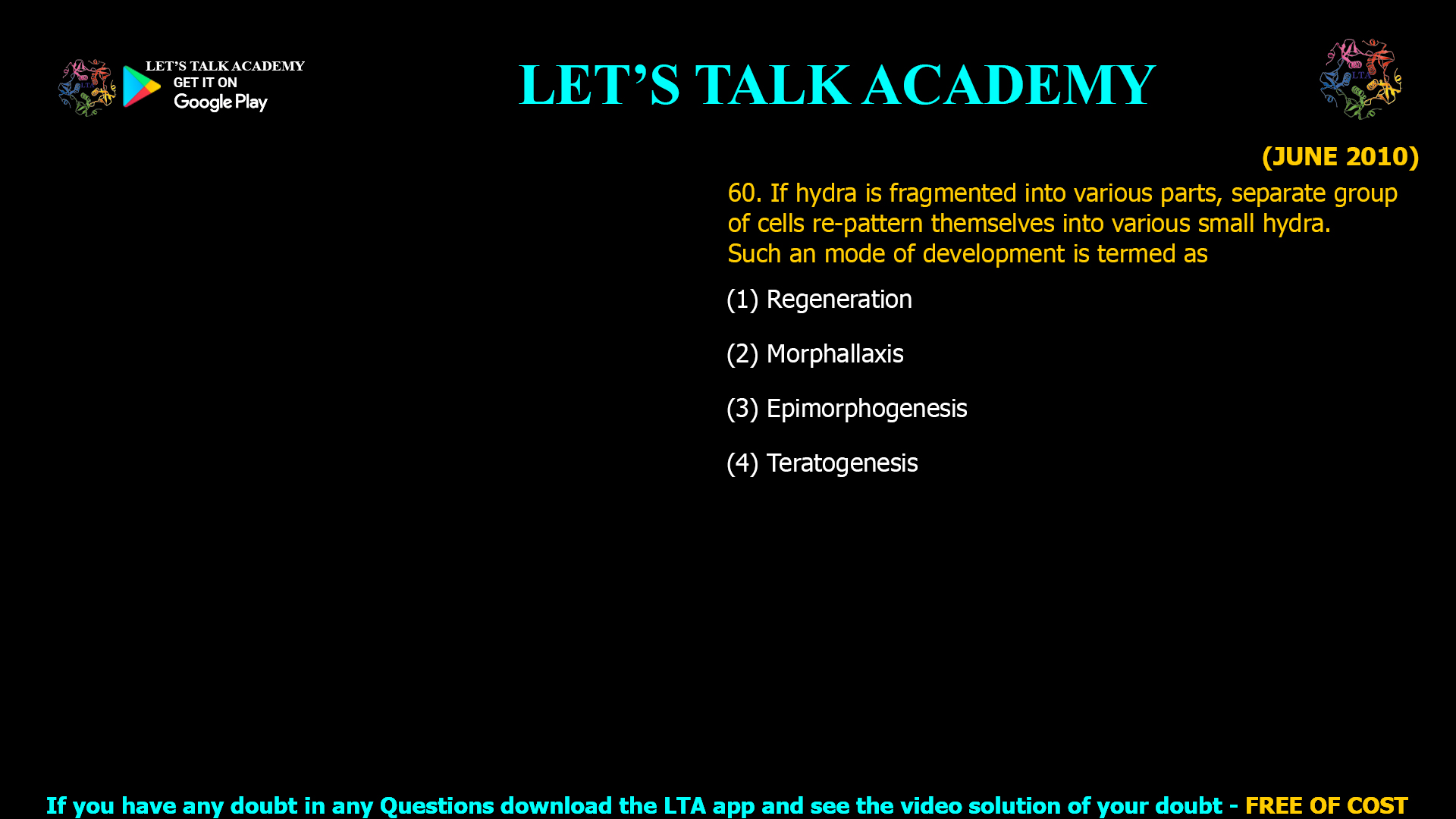- If hydra is fragmented into various parts, separate group of cells re-pattern themselves into various small hydra. Such an mode of development is termed as
(1) Regeneration (2) Morphallaxis
(3) Epimorphogenesis (4) Teratogenesis
When a hydra is fragmented into various pieces, each piece is capable of regenerating into a complete, smaller hydra. This regenerative mode involves existing cells re-patterning themselves without the extensive formation of new cells, reconstructing the missing structures and restoring functional morphology.
What Is Morphallaxis?
-
Morphallaxis is regeneration primarily through tissue remodeling and reorganization of existing cells, not dependent on a blastema or significant cell division.
-
During hydra regeneration, each fragment adjusts its structure and polarity, forming all necessary parts such as head and foot through positional cues and cellular repatterning.
-
The regrown hydra is generally smaller compared to the original but maintains all functional parts.
Why Hydra Regeneration Is Morphallaxis
-
The regeneration is achieved by transdifferentiation (cells changing their type) and morphogenetic gradients controlling the formation of new structures.
-
There is minimal cell proliferation in the initial phases of regeneration; the process relies on remodeling existing tissues.
-
This type of regeneration contrasts with epimorphosis seen in organisms like salamanders, where regeneration involves significant cell proliferation and blastema formation.
Explanation of the Options
-
(1) Regeneration: This is a broad term and can include multiple modes, but does not specify the mechanism.
-
(2) Morphallaxis: Correct answer as it describes regrowth by repatterning without new tissue growth, typical of hydra.
-
(3) Epimorphogenesis: Incorrect for hydra; epimorphosis involves blastema formation and cell division, which hydra do not primarily use.
-
(4) Teratogenesis: Refers to abnormal development or birth defects, unrelated to normal regenerative processes.
Summary
The mode of regeneration in hydra, involving fragments repatterning themselves into complete organisms without large-scale proliferation, is termed morphallaxis. This process exemplifies regeneration via tissue remodeling and cellular transformation, making hydra a vital model for this form of regeneration.
Final Answer:
(2) Morphallaxis -



